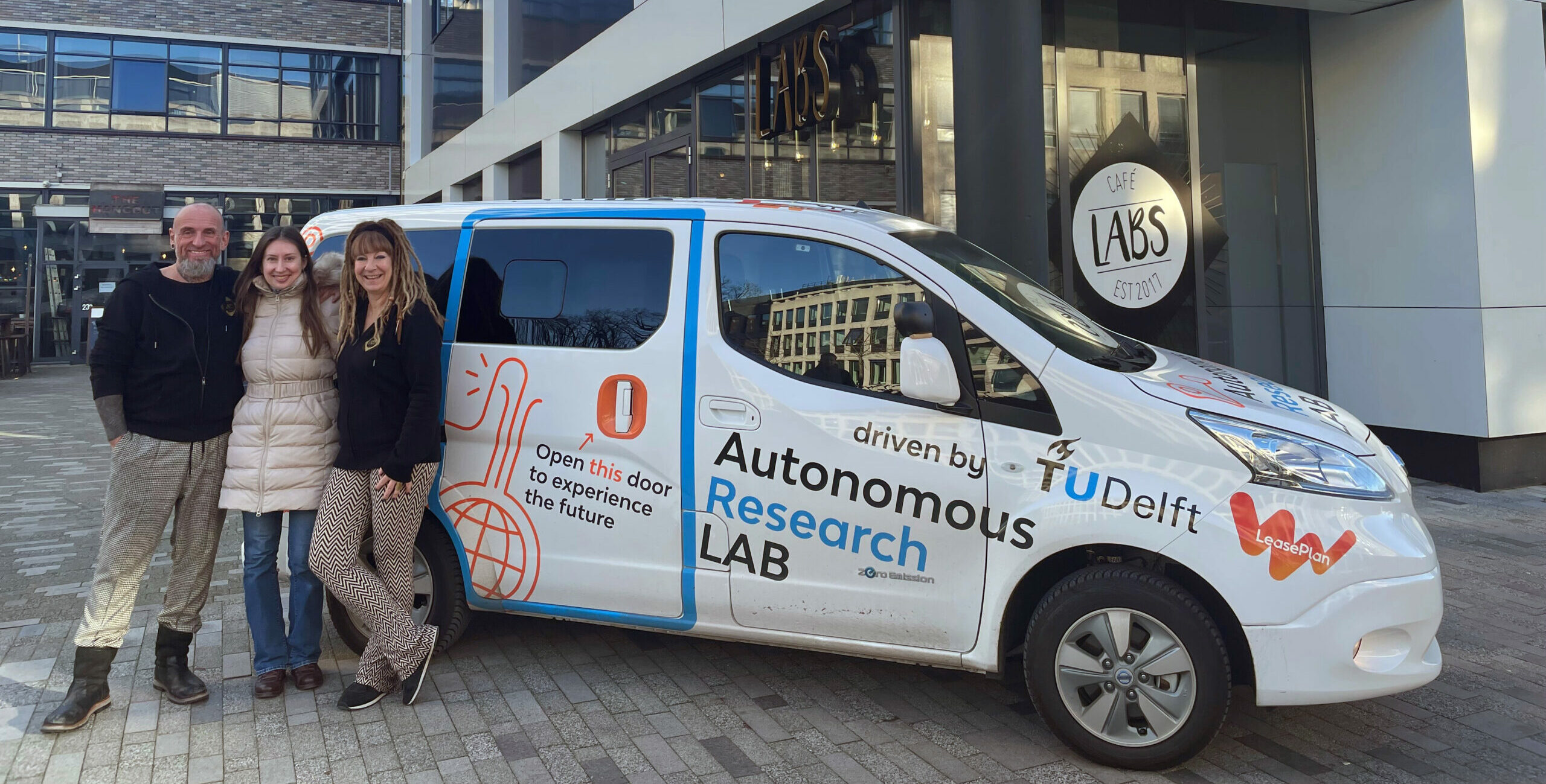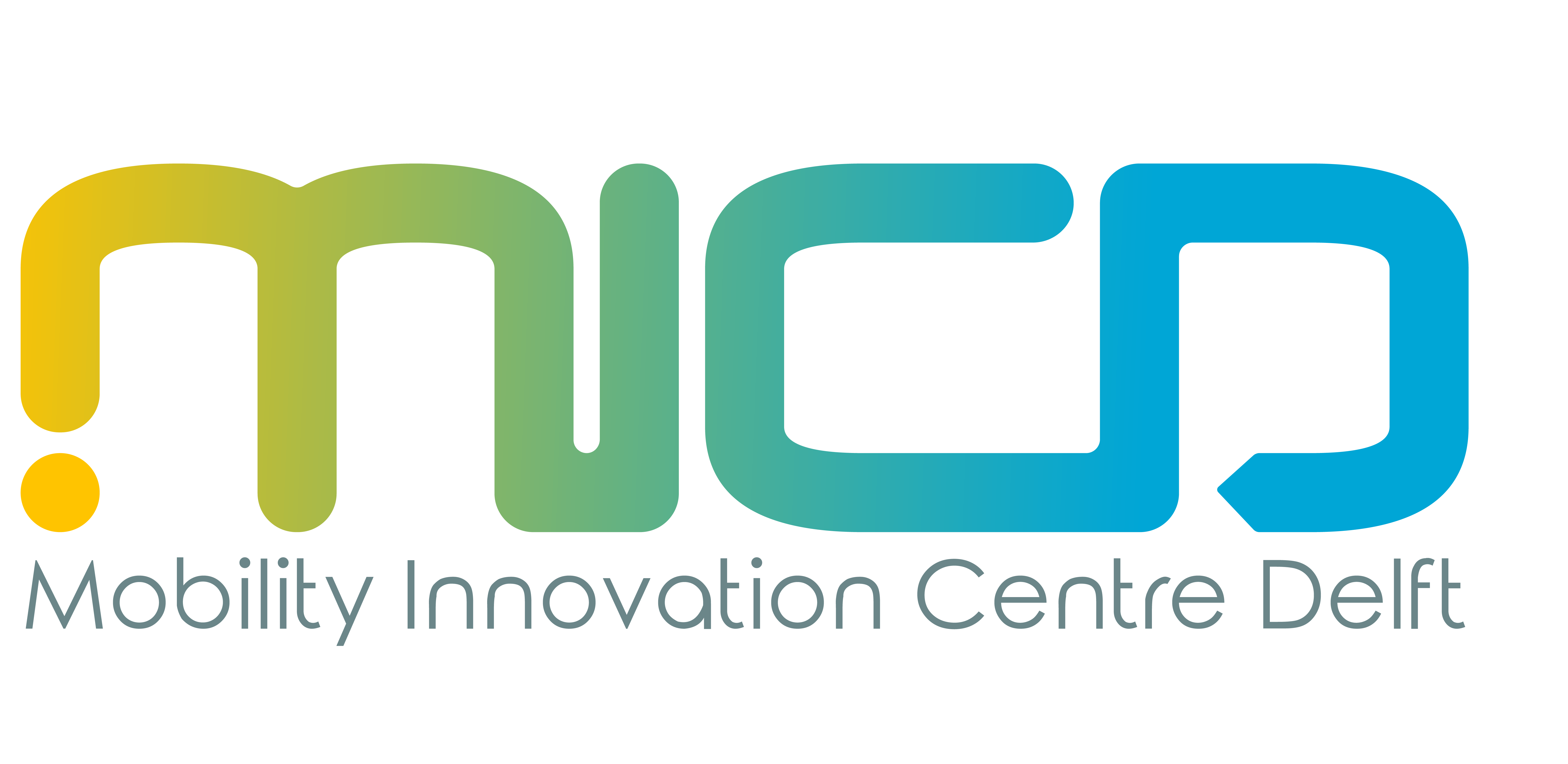When you take a ride in an automated vehicle, there’s no need to have your hands on the wheel and your eyes on the road. This means you have time to perform other tasks. But are you ready to give up control? Do you trust the vehicle enough to quietly read a book, for example? If so, does that influence the preference for shared automated rides? Maryna Öztürker used the Autonomous Driving Passenger Experience to find out.
Project
Use of travel time in shared automated vehicles, November 2022-April 2023Team
Maryna Öztürker, Sina Nordhoff, Gonçalo Homem de Almeida Correia, Sascha Hoogendoorn-Lanser, Bart van Arem, technicians Peter van Oossanen and Edwin Scharp, and a team of student drivers
What is the goal of your project?

Maryna Öztürker, TU Delft
“One advantage of riding in an automated vehicle is that your travel time is no longer lost time, but productive time—time to read, write or search the internet, for example. At least, that’s what we assume. We wanted to test whether that’s really the case. In our study, we focus on the use of automated vehicles for (sub)urban trips. Do we trust these vehicles enough to perform other tasks? Is it comfortable to do something while riding in an automated vehicle? And how does this affect preference for automated vehicles compared to other transport modes, such as conventional cars, buses, or bicycles?
“These are relevant questions because the introduction of automated vehicle services in urbanised areas could have several benefits, especially if these services are shared services. For example, if people start using shared vehicle services instead of taking their own car, this could lead to fewer cars on roads and more free space in the cities. Shared automated vehicles could be an interesting complement to the traditional public transport, for the first and last mile. On the other hand, this new mode of transport could also become serious competition to bus or train. So, it’s important to understand how people will react to this new type of service.”
How did you set up your research?
“The core of the experiment is the ride experience of participants in our ‘lab on wheels’, Autonomous Driving Passenger Experience. This is a conventional van driven by a driver in the front seat. The passenger compartment behind the driver has been redesigned. Our participants find themselves surrounded by OLED screens that display the environment of the car in real time. This gives them the impression that they’re riding in an automated, driverless vehicle—and we will even tell them that it’s a real autonomous vehicle, to make the test even more realistic. The car is filled with cameras and other equipment, to make video recordings of facial expressions and measure heart rate during the test rides.
“But we also collected data via surveys before and after the test rides. In the pre-ride survey, we asked the participants how they imagined the ride. In the surveys after the test rides, we asked them what it was really like.”

All participants were were warmly welcomed by Katja and Dennis, owners of the Café Labs
That sounds like a thorough study.
“It was a lot of work. Receiving our guests with some coffee in the marvellous Labs Café on TU Delft campus, explaining the test, taking the first survey, two test rides, the final survey… It took us 1,5 hours per participant—and mind you, we had 100 participants. But it was all worth it.
“The most impressive thing was the response to our advertisement. All 100 time slots were booked within two hours, mostly by Delft residents. As reasons for participating in this experiment, applicants cited their interest in automated driving technology and simple curiosity to experience the ride in a self-driving car.”
What are the results so far?
“Most participants felt safe in the vehicle. Some were a little nervous, of course, but only one participant pressed the emergency button we had installed. And we noticed that people felt more confident during the second ride. So, it seems that the participants are quickly getting used to using a self-driving vehicle.
“We just started analysing the responses and video recordings. We expect to complete our research in April 2023. By then we will be able to say, for example, whether it was more comfortable for our participants to work or to read during the test rides.”
More information:
hEAT lab
TU Delft | Transport Institute (financing)
